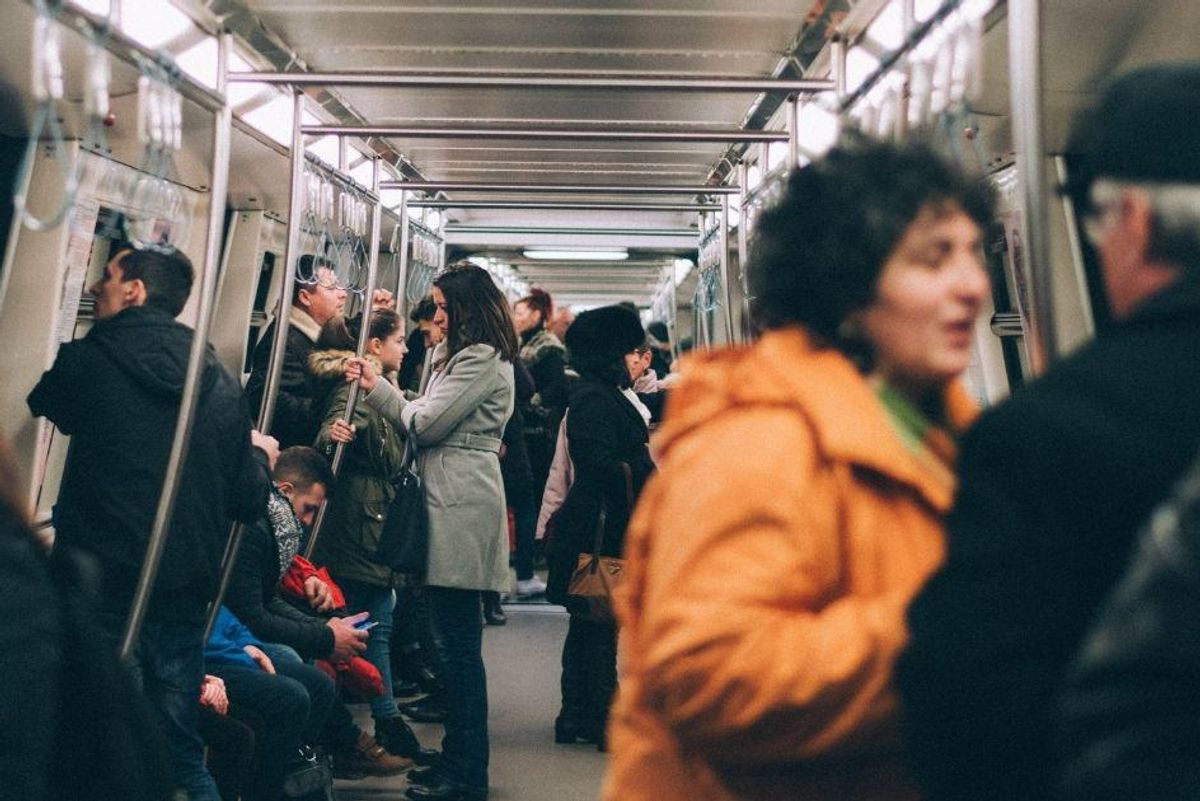Contrary to news headlines, bystanders actually do step in to help folks most of the time

A multinational study found that bystanders intervene in 9 out of 10 public conflicts.
The recent news report of a woman on a Philadelphia train being raped while onlookers did nothing to stop it was shocking and horrible, without question. It also got people discussing the infamous "bystander effect," which has led people to believe—somewhat erroneously, as it turns out—that people aren't likely to intervene when they see someone being attacked in public. Stories like this uninterrupted train assault combined with a belief that bystanders rarely step in can easily lead people to feel like everything and everyone is horrible.
But according to the most recent research on the subject, the Philadelphia incident appears to be the exception, not the rule. A 2019 multinational study found that at least one bystander (but usually more) will actually intervene in 9 out of 10 public conflicts.
The idea that people in groups aren't likely to intervene stems largely from research on the 1964 story of Kitty Genovese, a 28-year-old woman who was stabbed to death outside her apartment in New York, while dozens of onlookers in surrounding apartment buildings allegedly did nothing. However, further research has called the number of witnesses into question, and it appears that several did, in fact, call the police. Someone reportedly shouted out their window and scared the attacker away for a few minutes, and someone did rush to Genovese's aid after the second attack.
The bystander effect is real in the sense that people are less likely to intervene if there are other people around than if they are the lone bystander. But that doesn't mean that more people equals less intervention. The 2019 study by psychologist Richard Philpot and his four co-authors found the opposite, in fact—the more people who witnessed a conflict, the greater the likelihood that someone would step in. The study, which included observations of video footage from real-life public conflicts in the Netherlands, South Africa and the United Kingdom, found that one or more witnesses made a prosocial intervention in 90.7% of public conflicts, with an average of 3.8 witnesses intervening each time.
"We record similar likelihoods of intervention across the 3 national contexts, which differ greatly in levels of perceived public safety," wrote the authors. "Taken together these findings allay the widespread fear that bystanders rarely intervene to help. We argue that it is time for psychology to change the narrative away from an absence of help and toward a new understanding of what makes intervention successful or unsuccessful."
We all like to think we'd intervene if we saw someone being harmed in public, but it's easier to imagine acts of heroism than to actually do them. When witnessing a conflict or attack as a group, people often think someone else is more suited to stepping in or assume that someone else will do it. In some circumstances, someone might determine that intervening is too risky, especially if weapons are involved. Add in the real-time nature of an unexpected event where a person might be shocked or confused about what's happening, and it's not surprising that many people end up not intervening.
The Philadelphia train rape story is horrific, and the police in the case are right—someone (or several someones) on that train should have done something to stop it. But that case is not the norm. It's far more likely that someone will help you if you are being harmed and people are witnessing it.
Everything and everyone is not horrible, truly. There are exceptions to every rule, of course, but we shouldn't let the heinousness of a single story or two lead us to believe the worst about humanity. Most of the time, someone will do the right thing. Most of the time, in a public conflict or attack, someone will intervene. And perhaps with better education about how to successfully stop someone from being harmed, we could make the odds even greater than 9 out of 10.
- Check out Joe Biden helping a man in need outside a D.C. movie ... ›
- A chilling PSA takes on sexual assault through a unique set of eyes ... ›
- Check out how one college is teaching students how to prevent rape ... ›





 Rihanna Nails GIF
Rihanna Nails GIF

 Good luck trying to catch a gazelle.
Good luck trying to catch a gazelle. Chickens will eat just about anything.
Chickens will eat just about anything. There's actually a big difference between horses and zebras besides just the stripes.
There's actually a big difference between horses and zebras besides just the stripes. Stop Right There The End GIF by Freeform
Stop Right There The End GIF by Freeform